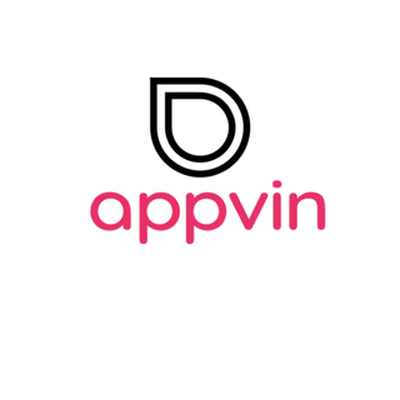Imagine being able to develop a complete mobile app in just one day. Well, hold onto your creative hats because the future is here, and it’s called GitHub Copilot!
In this blog, you will learn how to make the most of AI to build impressive mobile apps with GitHub Copilot.
What is GitHub Copilot?
GitHub Copilot is like having a coding buddy who never gets tired, always has your back, and writes code like a pro. Imagine the possibilities: a tool that understands your intent and generates code snippets right when you need them. It’s not just your typical code autocompletion — it’s the next level of code suggestion powered by machine learning. And it’s here to revolutionize how we develop mobile apps.
How GitHub Copilot Elevates Your Mobile App Development Game
Developing a mobile app requires multiple tasks — from choosing a framework to deploying the app. GitHub Copilot swoops in to make the process smoother than a hot knife through butter.
Here’s how it can help you:
Instant Code Suggestions: Think of GitHub Copilot as your coding genie. As you type, it suggests whole lines or blocks of code that align with your project. This is incredibly handy for mobile app development, where you often find yourself writing similar patterns for UI elements or API calls.
Quick Prototyping: Easily experiment with different ideas as Copilot generates code snippets, facilitating rapid prototyping.
Error Reduction: Copilot’s assistance helps catch errors early, preventing them from evolving into bugs that haunt your app.
Learning on the Go: Copilot is like that friend who helps you learn while doing. Not only does it generate code but also explains what it’s doing and why. This means you can upskill yourself while building your app.
Fast-Track Troubleshooting: Stuck on a bug? Copilot can speed up your debugging process by providing you with insights and solutions. Mobile app development can be tricky, but with Copilot, you’ve got a reliable partner.
How to Build a Mobile App with GitHub Copilot?
Step 1: Choose a Mobile App Framework
There are a lot of frameworks to choose from where each has its own strengths and weaknesses. Some popular choices include React Native, Flutter, and Ionic. The way to do this is by matching the framework to your app’s requirements. For instance, if you’re developing a native iOS app, React Native or Swift is your go-to option.
Step 2: Set Up Your Development Environment
Setting up your development environment includes installing the necessary software and tools. While GitHub Copilot can be integrated into any IDE or code editor, it’s recommended to use one specifically designed for mobile app development, such as Android Studio or Xcode. These environments provide tailored features that align seamlessly with your app-building journey.
Step 3: Create a New Project
Once your development environment is ready, it’s time to give birth to your project. Creating a new project involves setting up the app’s directory structure and initializing essential files. GitHub Copilot can be your genie in a bottle, suggesting code snippets and guiding you through the setup process. With its insights, creating a solid foundation for your app becomes easier.
Step 4: Write Your Code
Coding is where the magic happens, and GitHub Copilot is your trusty wand-wielder. As you start writing code, Copilot provides a helping hand by suggesting code snippets, completing unfinished lines, and spotting errors. Remember to regularly test your code to ensure its functionality aligns with your vision.
Step 5: Deploy Your App
With your app’s code polished and perfected, it’s time to introduce it to the world. Deployment involves making your app accessible to users. This might mean uploading it to an app store or hosting it on a web server. GitHub Copilot, true to its supportive nature, assists you in this final step. It offers guidance and generates code snippets that streamline the deployment process.
GitHub Copilot’s Limitations
GitHub Copilot’s limitation is its dependency on existing code. Copilot generates code based on patterns it learned from existing repositories. So, if your app idea is groundbreaking and far from conventional, you might need to do some manual coding.
Getting Started with GitHub Copilot
Sign Up: If you haven’t already, sign up for the GitHub Copilot beta here.
Install the Copilot extension in your chosen IDE or code editor.
Explore its features and dive into your app development journey.
Learn from Others: Explore projects and repositories on GitHub. This can give you insights into how Copilot assists other developers and how it can fit into your workflow.
Dive Right in the best way to learn is by doing. Start a small project and witness Copilot’s magic firsthand.
Pro Tips to make the most of GitHub Copilot
Collaborate with Copilot: Treat Copilot as your partner, not a replacement. Collaborate with it, and you’ll be amazed at the synergy you can achieve.
Clear Instructions: When you need specific functionality, provide clear instructions for Copilot to better assist you.
Regular Testing: Test your code frequently to catch any discrepancies or errors early on.
Mindful Editing: While Copilot helps with code suggestions, ensure you understand and edit the generated code as needed.
Conclusion
So, what are you waiting for? Let GitHub Copilot transform your mobile app development journey. And if you’re in for more insights, check out this fascinating success story of building an app using Copilot. And for all your mobile app development needs, visit the experts at Appvin Technologies.











Comments